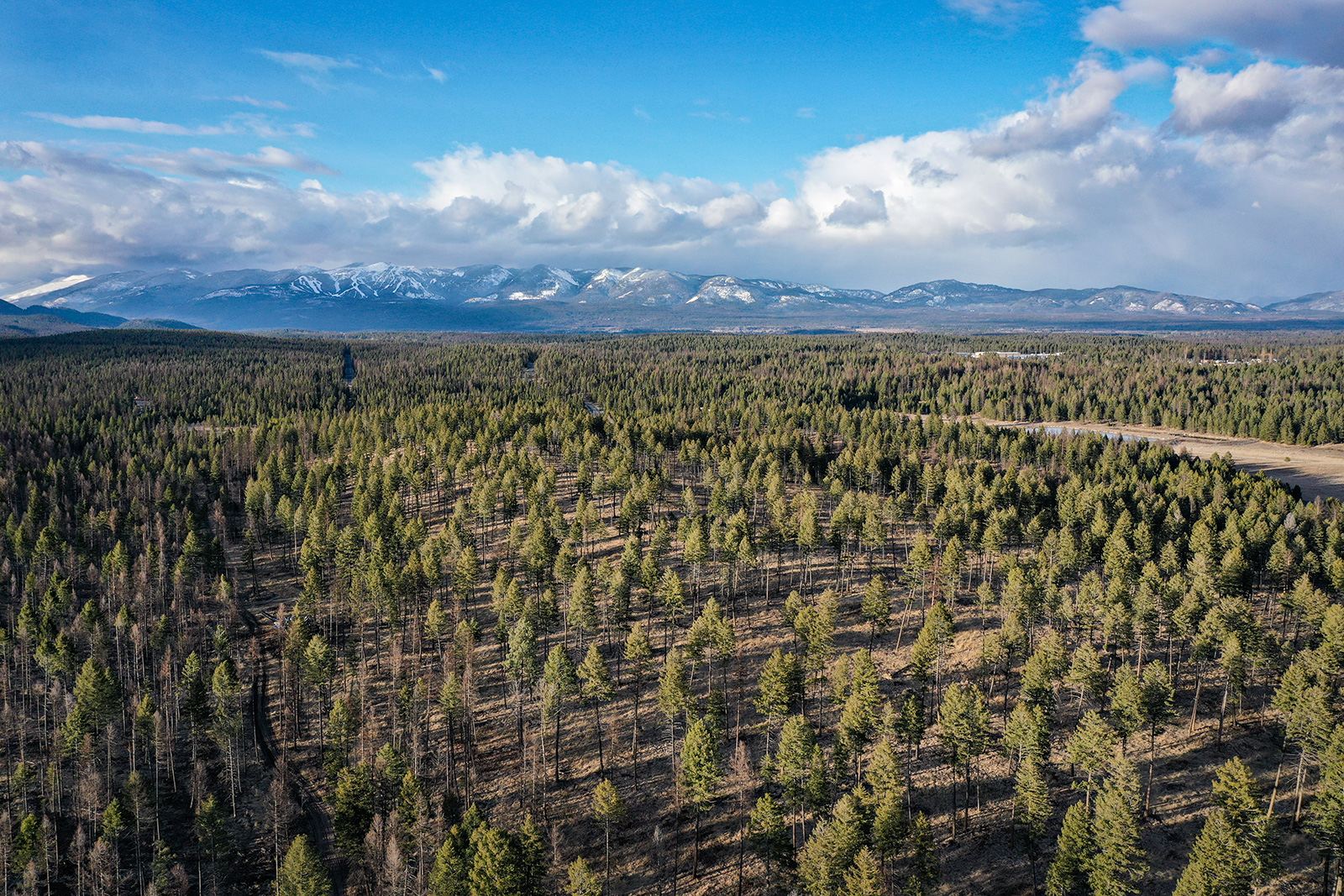KM Ranch Property Denied Access Through Whitefish Subdivision
Following lengthy court process, Judge Amy Eddy ruled against reviewing road abandonment, subdivision access to former Baker 80 property
By Micah Drew
Following nearly two years of litigation and contentious meetings with the county, a judge has finalized a ruling over access to a property off of KM Ranch Road.
After a contested hearing in October, Flathead County District Judge Amy Eddy denied a petition by GBSB Holdings, LLC, that requested public access to an 80-acre property via privately maintained roads in the Whitefish Hills Village (WHV) subdivision, arguing that a previously abandoned road had provided a right-of-way.
The property was subject to a proposed 16-lot subdivision that was approved by Flathead County commissioners in early 2021, despite opposition from neighboring property owners around the public access.
The 80 acres of land was owned by Scott Baker and his company, GBSB Holdings, at the time of the lawsuit (GBSB has since conveyed the property to Octex Company, but continued the lawsuit), after Baker purchased the
property in 2020. The property is located west of U.S. Highway 93 and north of KM Ranch Road and abuts the Whitefish Hills Village subdivision to the north.
The lawsuit, which was filed in 2021 before the county commission approved the development, centered around Brady Way, a county road that was partially abandoned in 2019 at the behest of the Whitefish Hills Village developer. The southern portion of Brady Way was never constructed but was still considered a public easement. The county approved the petition to abandon the portion of Brady Way as the internal subdivision road Whitefish Village Drive effectively replaced it.
In the preliminary plat for Baker 80 that was approved by the Flathead County Planning Board and the commissioners, primary access to the subdivision was to be via public, albeit privately maintained, roads that run throughout Whitefish Hills Village. Baker repeatedly argued to the planning board, commissioners and court that because the existing roads have a public access easement, and were a “realignment” of Brady Way, the fact that they are privately maintained was irrelevant.
The Baker property can be accessed from the south via Prairie View Drive, an unpaved road branching off of KM Ranch Road, but to meet county standards the developer would have been required to pave nearly 2,500 feet of road, a heavier financial burden than using the existing roadway, Whitefish Village Drive, to the north.
The Whitefish Hills Village Homeowners Association argued that as a privately maintained subdivision road, the county did not have the authority to mandate Whitefish Village Drive serve as primary access to the proposed Baker 80 development.
In September 2021, Judge Eddy denied GBSB Holdings’ request for a declaratory judgement that the Whitefish Hills Village roads be mandated as public easements and utilized as primary access points.
“Baker 80 cannot prove a necessity for using WHV’s roads as means of bootstrapping the use onto WHV’s easement,” Eddy wrote in her order. “Baker 80 has ample alternative access … they just do not want to pay to construct a road.”
Litigation persisted after Eddy’s order, specifically surrounding whether the county’s 2019 abandonment of Brady Way was correctly carried out. GBSB Holdings claimed the petition to abandon the portion of Brady Way were “so defective as to be invalid” and requested the original right of way, and subsequently the public access, to the Baker 80 property be restored.
In her November 21 order, Eddy ruled that “though not perfect,” the county followed Montana Code during the abandonment process, and that since no physical access to the Baker property had been provided via Brady Way, a right-of-way did not need to be reassigned through the Whitefish Hills Village subdivision.
“GBSB was not affected by the abandonment because they did not, and could not, actually use of the [sic] Brady Way to access their property,” the order stated. “The evidence in the record indicates that the abandoned portion of Brady Way was never developed and was not used by any landowners to the south, including GBSB and their predecessors.”
Judge Eddy declined to revisit the previous ruling against GBSB’s use of Whitefish Hills Drive as primary access to the property.